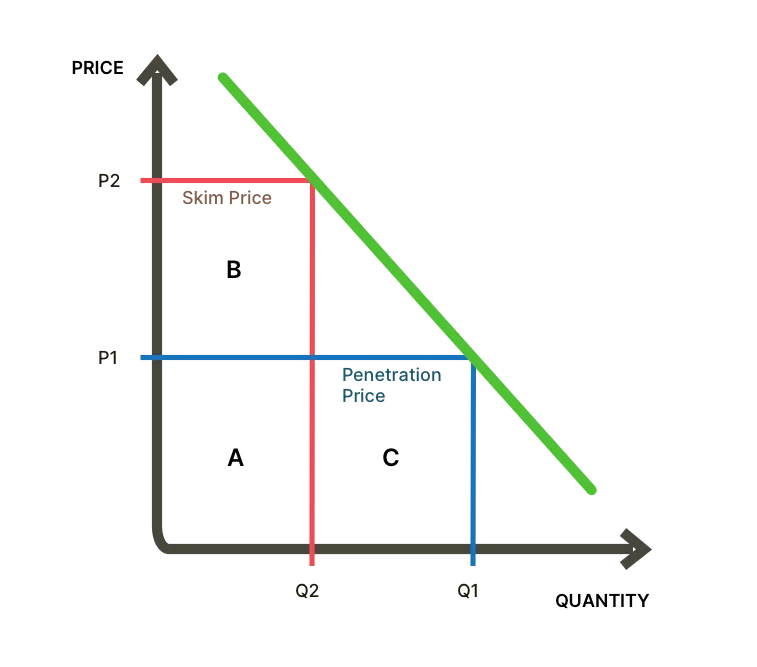Pricing strategies tend to change as a product goes through its product life cycle. One stage is particularly challenging: the introductory stage. This is called New Product Pricing. When companies bring out a new product, they face the challenge of setting prices for the very first time. Two new product pricing strategies are available: Price Skimming and Market Penetration Pricing. Let’s learn more about these two new product pricing strategies.
Price-Skimming
The first new product pricing strategy is called price-skimming. It is also referred to as market-skimming pricing. Price-skimming (or market-skimming) calls for setting a high price for a new product to skim maximum revenues layer by layer from those segments willing to pay the high price. This means that the company lowers the price stepwise to skim the maximum profit from each segment. As a result of this new product pricing strategy, the company makes fewer but more profitable sales.
Many companies inventing new products set high initial prices to skim revenues layer by layer from the market. An example of a company using this new product pricing strategy is Apple. When it introduced the first iPhone, its initial price was rather high for a phone. The phones were, consequently, only purchased by customers who really wanted the new gadget and could afford to pay a high price for it. After this segment had been skimmed for six months, Apple dropped the price considerably to attract new buyers. Within a year, prices were dropped again. This way, the company skimmed off the maximum amount of revenue from the various segments of the market.
However, this new product pricing strategy does not work in all cases. Price skimming makes sense only under certain conditions. The product’s quality and image must support the high initial price, and enough buyers must want the product at that price. Also, the costs of producing smaller must not be so high that they overshadow the advantage of charging more. And finally, competitors should not be in sight – if they can enter the market easily and undercut the high price, price-skimming does not work.

Market-Penetration Pricing
The opposite new product pricing strategy of price skimming is market-penetration pricing. Instead of setting a high initial price to skim off each segment, market-penetration pricing refers to setting a low price for a new product to penetrate the market quickly and deeply. Thereby, a large number of buyers and a large market share are won, but at the expense of profitability. The high sales volume leads to falling costs, which allows companies to cut their prices even further.
Market-penetration pricing is also applied by many companies. An example is the giant Swedish furniture retailer Ikea. By introducing products at very low prices, a large number of buyers is attracted, making Ikea the biggest furniture retailer worldwide. Although the low prices make each sale less profitable, the high volume results in lower costs and allows Ikea to maintain a healthy profit margin.
For this new product pricing strategy to work, several conditions must be met. The market must be highly price-sensitive so that a low price generates more market growth and attracts a large number of buyers. Also, production and distribution costs must decrease as sales volume increases. In other words, economies of scale must be possible. Finally, the low price must ensure that competition is kept out of the market, and the company using penetration pricing must maintain its low-price position. Otherwise, the price advantage will only be temporary.








